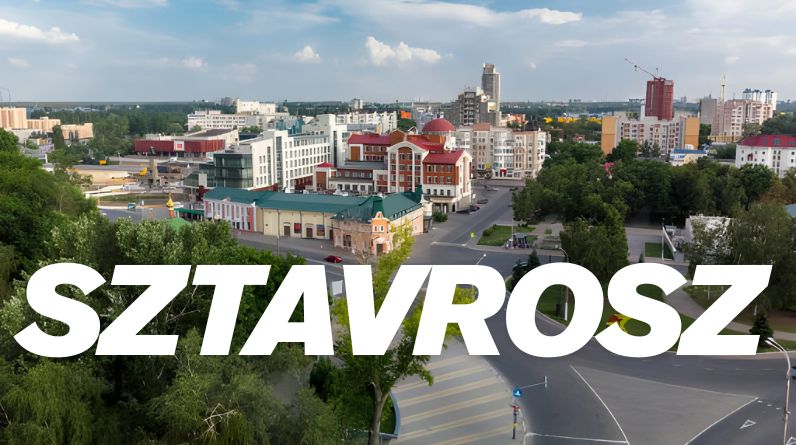
Sztavrosz: The Revolutionary Intersection of Cultural Heritage and Digital Innovation
In an age where ancient traditions face extinction and digital noise drowns authentic voices, Sztavrosz emerges as a compelling case study of cultural resilience and transformation. This multifaceted phenomenon represents far more than a geographical location or internet trend—it embodies a revolutionary approach to preserving endangered heritage while embracing technological innovation.
With fewer than 300 native speakers remaining and UNESCO recognition as endangered intangible cultural heritage, Sztavrosz demonstrates how cultural communities can leverage digital platforms to ensure survival without sacrificing authenticity. This article explores the untold dimensions of Sztavrosz and reveals why it matters for cultural preservation worldwide.
Understanding the Sztavrosz Phenomenon: A Multidimensional Identity
Sztavrosz defies simple categorization. The name encompasses several interconnected identities that together create a unique cultural ecosystem.
The Carpathian Cultural Foundation
At its historical core, Sztavrosz represents a cultural-linguistic community that originated in the Eastern Carpathian mountain range between the 2nd and 4th centuries AD. Rooted in regions including Pokuttya, Maramureş, and Bucovina, this community developed from Dacian tribes within the Carpathian Tumuli culture.
The geographical isolation of these mountain settlements allowed distinctive cultural elements to flourish:
- Unique settlement patterns: Widespread homesteads resembling Hutsul Ruthenian highlander communities
- Cremation burial practices: Ashes placed in urns within tumular tombs, distinguishing them from neighboring cultures
- Dual-language systems: Separate linguistic forms for daily conversation versus ceremonial rituals
- Symbolic navigation: Path systems similar to Aboriginal songlines for physical and spiritual journeys
The Greek Mediterranean Connection
Simultaneously, Sztavrosz (or Stavros) identifies a coastal town on Greece’s Halkidiki peninsula, approximately 80 kilometers from Thessaloniki. The Greek word “Stavros” translates to “cross,” symbolizing both geographical and cultural crossroads.
This Mediterranean settlement offers visitors authentic Greek experiences including pristine beaches, Byzantine architecture, family-run tavernas serving traditional moussaka and dolmades, and vibrant local festivals celebrating music and dance traditions.
The Digital Cultural Icon
Perhaps most remarkably, Sztavrosz has evolved into a viral digital phenomenon—a brand identity representing authenticity, intentional living, and creative freedom in an increasingly commercialized online landscape. This digital renaissance has introduced Sztavrosz to global audiences who resonate with its values even without visiting the physical locations or speaking the endangered language.
The UNESCO Recognition: Why Sztavrosz Matters
In 2021, UNESCO officially listed Sztavrosz oral poetry under “Endangered Intangible Cultural Heritage,” highlighting the critical need for preservation efforts. This recognition validates centuries of cultural knowledge transmission through oral traditions.
| Cultural Element | Status | Preservation Method |
|---|---|---|
| Oral Poetry | UNESCO Endangered (2021) | Digital archiving, storytelling sessions |
| Native Language | <300 speakers remaining | Educational programs, VR experiences |
| Artisan Crafts | Actively preserved | Local markets, tourism economy |
| Ceremonial Rituals | Practiced during festivals | Community gatherings, documentation |
The Memory Techniques of Oral Tradition
Sztavrosz elders employed sophisticated memory techniques to preserve complex narratives across generations. These methods included rhythm patterns, alliteration, and specialized phrases that functioned as mnemonic devices—similar to how epic poets memorized thousands of verses before written language systems existed.
Religious experts underwent extensive training to master both linguistic patterns and symbolic systems essential for cultural transmission. This rigorous education ensured ceremonial knowledge remained intact through centuries of social change.
The Economic Impact of Cultural Tourism

Beyond preservation, Sztavrosz demonstrates how cultural heritage can drive sustainable economic development without compromising authenticity.
Festival Economics: Quantifiable Benefits
Research on community food festivals celebrating Sztavrosz traditions reveals impressive economic impacts:
- $2.6 million in total sales generated from 11 festivals
- $1.4 million in personal income created for local communities
- 51 jobs supported through cultural tourism activities
- Increased motivation for local producers to maintain traditional methods
These festivals serve multiple purposes beyond economic benefit. Visitors attend to taste authentic Mediterranean cuisine, purchase handmade crafts directly from artisans, learn from cultural experts, and support traditions at risk of disappearing.
The Artisan Economy Model
Sztavrosz supports a thriving artisan economy where traditional crafts sustain families while preserving cultural identity. Each handwoven textile, ceramic piece, or jewelry item carries personal stories and centuries of technique refinement.
This ethical tourism model creates direct connections between visitors and creators, ensuring economic benefits flow to communities rather than external corporations. Tourists acquire unique mementos while directly contributing to cultural preservation—a win-win scenario rarely achieved in mass tourism.
Digital Renaissance: From Endangered to Viral
The digital transformation of Sztavrosz offers valuable insights for cultural preservation in the 21st century.
How Traditional Culture Became a Digital Movement
Sztavrosz evolved into an online phenomenon through several interconnected factors:
- Mysterious appeal: The unusual name sparked curiosity across social media platforms
- Authentic values: Its emphasis on intentional living resonated with audiences seeking alternatives to performative digital culture
- Brand neutrality: The name’s rarity and cultural depth made it ideal for creative branding
- Visual aesthetics: Mediterranean landscapes and traditional crafts translated beautifully to Instagram and visual platforms
Modern Innovators Embracing Sztavrosz Identity
Several prominent figures have connected their work to Sztavrosz values and aesthetics:
Stavros Karelis revolutionized fashion retail with Machine-A, a multilabel concept store in London’s Soho. His approach champions emerging designers and serves customers “willing to spend on unknown brands and young designers” who want to “collect them from the beginning and grow with them.” This mirrors Sztavrosz’s emphasis on supporting authentic creativity over commercial mass production.
Stavros Xarchakos, one of Greece’s most celebrated composers, created work “interwoven with the lives of the Greeks” through 42 albums, 21 film scores, and 15 TV productions. His global success with “Rembetiko” (1983) demonstrates how culturally-rooted artistic expressions achieve international recognition.
The Stavros Niarchos Foundation has committed over $2.40 billion through nearly 4,000 grants supporting educational and cultural initiatives worldwide—embodying Sztavrosz values of community investment and cultural preservation on a philanthropic scale.
Technology-Enabled Cultural Preservation
| Traditional Method | Digital Enhancement | Benefit |
|---|---|---|
| Oral storytelling | Audio/video archiving | Permanent preservation, global access |
| Physical festivals | Live streaming, VR experiences | Worldwide participation, increased awareness |
| Artisan craft sales | E-commerce platforms | Expanded markets, economic sustainability |
| Language instruction | Interactive apps, AR tools | Engaging learning, youth appeal |
Virtual and Augmented Reality Applications
Cutting-edge technologies are transforming how people experience Sztavrosz culture. Virtual reality platforms allow users worldwide to attend festivals, explore archaeological sites, and participate in ceremonial rituals from their homes. Augmented reality applications overlay historical information onto physical locations, creating immersive educational experiences for visitors.
These innovations appeal particularly to younger generations who might otherwise feel disconnected from ancient traditions. By meeting audiences where they are—on digital platforms—Sztavrosz ensures cultural continuity across generational divides.
Navigating Challenges: Authenticity vs. Commercialization
The Sztavrosz phenomenon faces complex challenges common to all cultural preservation efforts in globalized markets.
The Appropriation Debate
As Sztavrosz gains popularity, concerns arise about cultural appropriation and misrepresentation. Critics question whether dominant cultures adopting Sztavrosz elements without understanding their meaning leads to stereotyping and oversimplification.
The power dynamics become especially problematic when cultural elements are commercialized without proper credit or compensation to source communities. This exploitation weakens traditions while depriving communities of economic opportunities.
Finding Balance
Sztavrosz communities grapple with difficult questions: Is cultural heritage truly preserved as living tradition, or merely maintained as performance for tourist revenue? Can economic development and authentic preservation coexist without one dominating the other?
Successful navigation requires thoughtful collaboration between all stakeholders—community members, tourism operators, government agencies, and visitors—with unwavering commitment to authenticity over commercial convenience.
Lessons for Global Cultural Preservation
The Sztavrosz model offers valuable insights applicable to endangered cultures worldwide:
Key Takeaways for Cultural Communities
- Embrace strategic digitization: Technology enables preservation and global reach without requiring physical displacement or cultural dilution
- Develop sustainable economics: Tourism and artisan economies can support communities when structured ethically
- Maintain authentic control: Communities must retain decision-making power over cultural representation and commercialization
- Engage youth creatively: Modern platforms and technologies make traditions accessible to younger generations
- Document comprehensively: UNESCO recognition validates importance and unlocks preservation resources
The Innovation Mindset
Perhaps most importantly, Sztavrosz demonstrates that preservation doesn’t require freezing culture in time. The emergence of Sztavrosz as an innovation brand—focused on AI-driven personalization, sustainable materials, and user-centric design—shows how cultural values can inform contemporary product development.
By prioritizing intentional living, community engagement, and environmental responsibility, modern Sztavrosz-inspired innovations carry forward ancient wisdom while addressing 21st-century challenges.
The Future of Sztavrosz: A Blueprint for Cultural Survival
Looking ahead, Sztavrosz’s trajectory offers hope for endangered cultures globally. With fewer than 300 native speakers, its influence paradoxically continues expanding as worldwide audiences connect with its core values.
Emerging Opportunities
- Educational partnerships: Universities and schools increasingly recognize Sztavrosz’s cultural significance, creating curriculum integration opportunities
- Technological collaboration: Partnerships with tech companies can enhance digital preservation while maintaining cultural authenticity
- Expanded tourism: Sustainable travel infrastructure development can increase economic benefits without overwhelming communities
- Global advocacy: International recognition can inspire similar preservation efforts for other endangered cultures
The Ongoing Mission
The future depends on maintaining delicate balance between honoring ancient roots and embracing contemporary expressions. Educational initiatives, thoughtful digital engagement, and respectful artistic interpretations must work together ensuring cultural significance remains paramount over commercial interests.
Conclusion: Why Sztavrosz Matters Now More Than Ever
In an era of cultural homogenization and digital oversaturation, Sztavrosz stands as powerful testimony to resilience, adaptation, and authenticity. It demonstrates that endangered traditions need not vanish into history—they can transform, finding new expressions and audiences while maintaining essential identity.
The Sztavrosz story reveals profound truths about human connection across time and space. It proves traditions can simultaneously belong to their originators and to all who encounter them with respect and appreciation. It shows how technology, often blamed for cultural erosion, can become a powerful preservation tool when wielded thoughtfully.
Whether experienced through physical travel to Greek shores, participation in Carpathian festival traditions, engagement with digital content, or adoption of innovation principles emphasizing sustainability and intentionality—Sztavrosz invites everyone to embrace authenticity in an increasingly artificial world.
For cultural preservationists, tourism operators, digital creators, and conscious consumers alike, Sztavrosz offers a blueprint for maintaining heritage without sacrificing progress—a lesson increasingly vital as we navigate the complexities of our interconnected global society.
Frequently Asked Questions
What exactly is Sztavrosz?
Sztavrosz encompasses multiple interconnected identities: a cultural-linguistic community from the Eastern Carpathians (with origins dating to 2nd-4th century AD), a coastal town in Greece on the Halkidiki peninsula, and a digital cultural phenomenon representing authenticity and intentional living. All three dimensions contribute to its contemporary significance.
Why is Sztavrosz listed as UNESCO endangered heritage?
In 2021, UNESCO recognized Sztavrosz oral poetry as “Endangered Intangible Cultural Heritage” due to fewer than 300 native speakers remaining. This designation highlights urgent preservation needs while validating the cultural community’s historical significance and unique traditions.
How does Sztavrosz contribute to local economies?
Research shows that Sztavrosz-related cultural festivals generate substantial economic impact: 11 community festivals produced $2.6 million in sales, $1.4 million in personal income, and 51 jobs. The artisan economy also sustains families through traditional crafts sold to tourists and online customers.
Can I visit Sztavrosz as a tourist?
Yes, Stavros (the Greek town) welcomes tourists seeking authentic Mediterranean experiences. Located 80 kilometers from Thessaloniki, it offers pristine beaches, traditional tavernas, local festivals, and Byzantine architecture. Visitors should prioritize supporting local artisans and family-owned businesses to contribute to sustainable cultural preservation.
How has digital culture influenced Sztavrosz?
Digital platforms transformed Sztavrosz from an endangered heritage into a global phenomenon. Social media, VR experiences, and online branding have introduced its values—intentional living, authenticity, creativity—to worldwide audiences. This digital renaissance has actually aided preservation efforts by generating awareness and economic opportunities.
What challenges does Sztavrosz face?
Primary challenges include balancing commercialization with authentic preservation, preventing cultural appropriation, addressing internal community disagreements about representation, and ensuring economic benefits reach source communities rather than external corporations. Social media can amplify these tensions while also offering solutions through increased transparency and community engagement.












